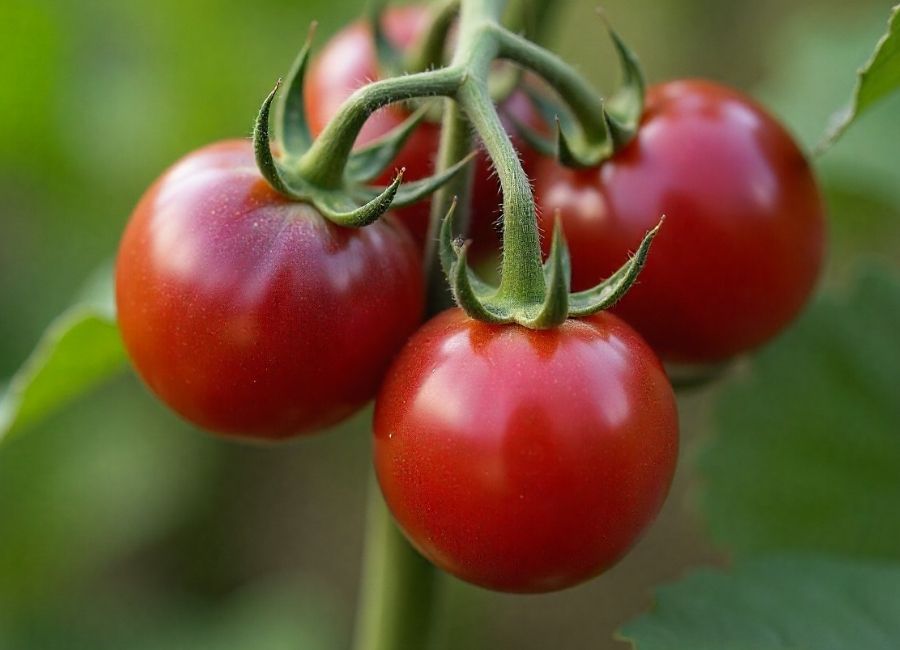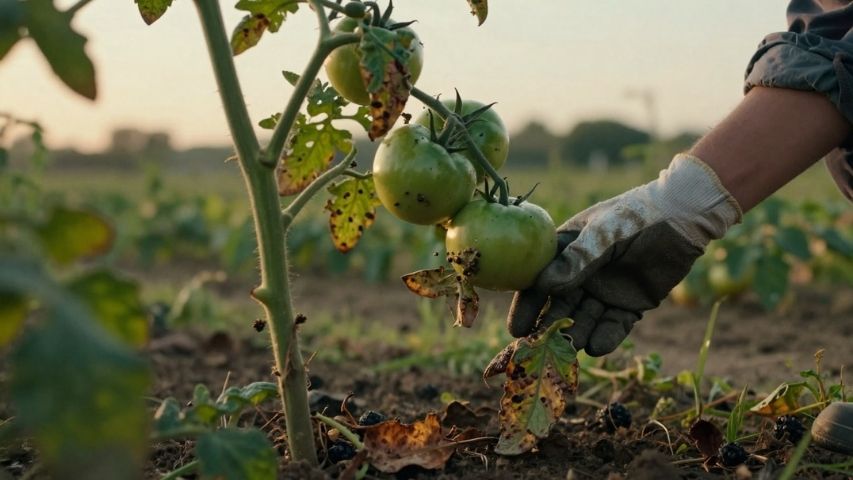Gardeners and food lovers often choose the Cherokee Purple tomato for its unique dark color, interesting history, and tangy-sweet flavor. This heirloom variety is a great option if you want to grow something special in your garden.
Why is this tomato so popular? Its history is as interesting as its flavor. Many believe the Cherokee people in Tennessee first grew this variety, and it has been handed down for generations (Cherokee Purple Tomato, 2025). Its dusty rose-to-purple skin with green shoulders makes it a beautiful choice for gardens and meals.
This guide covers what you need to know to grow Cherokee Purple tomatoes. You’ll learn about their special traits, how to plant and care for them, and ways to use your harvest. By the end, you’ll feel ready to grow these tasty tomatoes at home.
What is a Cherokee Purple Tomato?
The Cherokee Purple is an heirloom beefsteak tomato with a dark purple-red color and a rich, complex flavor. Unlike modern hybrids, heirlooms are open-pollinated and passed down through generations, valued for their unique taste and qualities.
History and Origin
The Cherokee Purple tomato has deep roots in American history. Many believe the Cherokee people first grew and saved these seeds. The variety became popular among gardeners in the late 20th century and is now a favorite for its taste and story (Cherokee Purple (tomato), 2025). As an heirloom, you can save seeds from your own tomatoes to plant next year and keep the tradition going.
Flavor and Characteristics
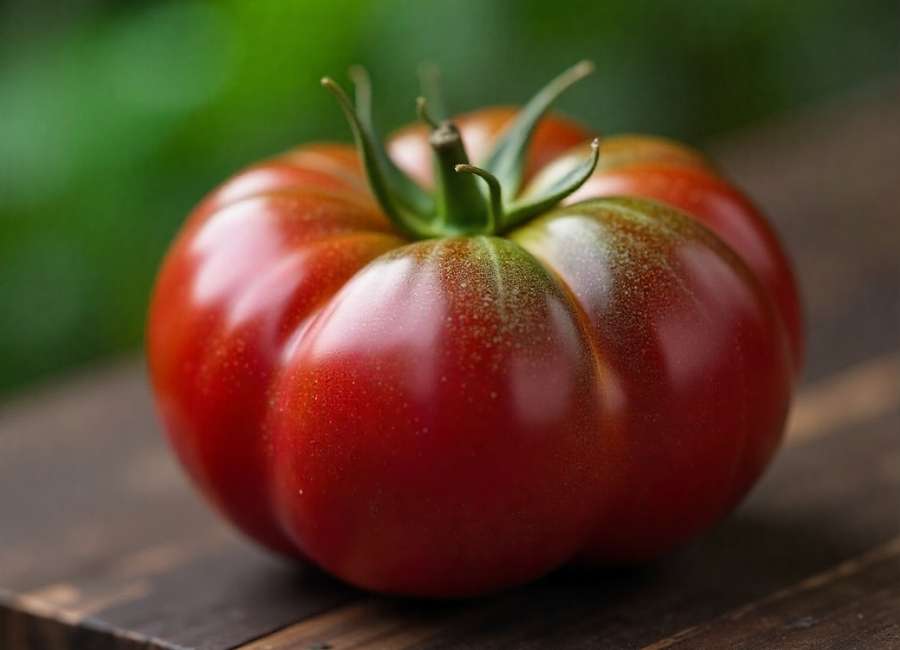
Cherokee Purple tomatoes are known for their superb flavor profile. They are often described as having a rich, sweet, and almost smoky taste that is more complex than that of a typical red tomato. The flesh is dense and juicy, with a deep red interior.
Here’s a quick profile of the Cherokee Purple tomato:
- Fruit Type: Beefsteak
- Color: Purple to red-brown with green shoulders
- Flavor: Fruity, aromatic, and tangy-sweet
- Ripening Time: Late season (around 80-90 days from transplant) (Cherokee Purple Tomato – Truelove Seeds, n.d.)
- Growth Habit: Indeterminate (vining), reaching up to 150cm (about 5 feet) (Tomato Seeds – Indeterminate – Cherokee Purple Tomato Standard, n.d.)
- Fruit Weight: Can reach up to 400g (about 14 ounces) (Cherokee Purple Tomato Seeds, 2024)
The plants have thin, wispy leaves, which might surprise new gardeners. Still, with good care, they will give you plenty of large, tasty tomatoes.
How to Grow Cherokee Purple Tomatoes
Cherokee Purple tomatoes need some extra care, but the results are worth it. Like other beefsteak types, they grow best with a long, warm season and the right attention.
Planting and Location

Due to their thin skin and susceptibility to cracking, Cherokee Purple tomatoes thrive best in a warm, dry, and protected environment. A greenhouse is an ideal location, as it shields the plants from excessive rain and humidity, which can cause the fruit to split and rot. If you’re growing them outdoors, choose the sunniest, most sheltered spot in your garden.
Designed explicitly for vegetables to help your plants get off to a good start. Plant your seedlings after the last frost, usually in early to mid-May. Use soil designed explicitly for vegetables to help your plants get off to a strong start. Adding good organic compost provides young plants with the essential nutrients they need for strong roots and healthy growth.
Support and Pruning
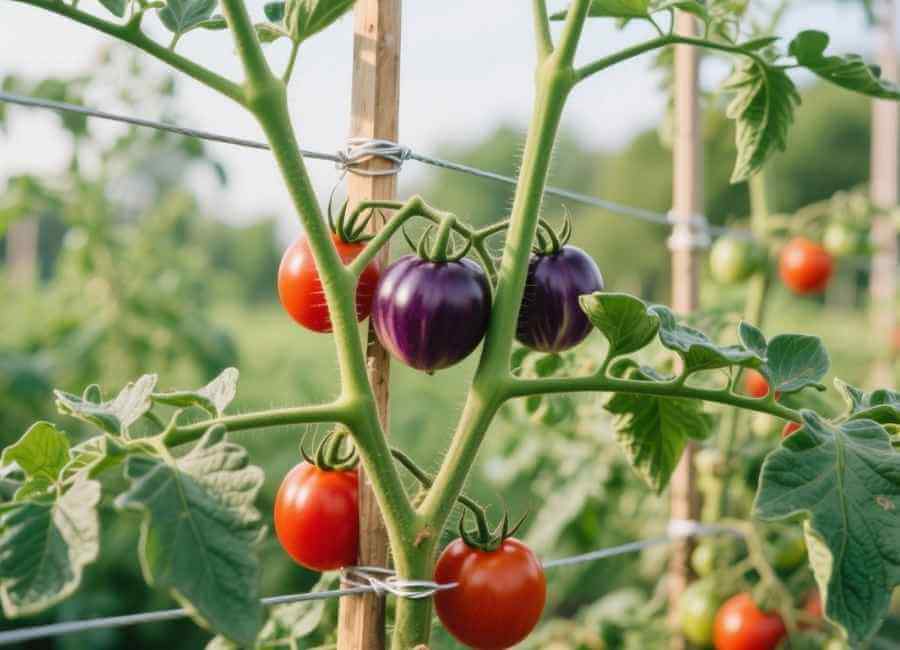
Cherokee Purple plants are indeterminate, so they grow like vines and keep producing fruit until the first frost. They need strong support. Use tall stakes, cages, or a trellis to lift the vines off the ground, which helps prevent disease and keeps the fruit clean.
Pruning is essential for managing a plant’s growth and promoting the production of large fruit. It is best to grow beefsteak tomatoes with only one or two main stems (shoots) per plant. This enables the plant to allocate its energy to producing large, heavy fruits on a robust central stem. Remove the “suckers,” which are the small side shoots that appear in the ‘V’ between the main stem and the branches. Pruning these away ensures the plant’s resources aren’t diverted to growing more foliage at the expense of fruit. (Tomato, Cherokee Purple, n.d.)
Fertilizing
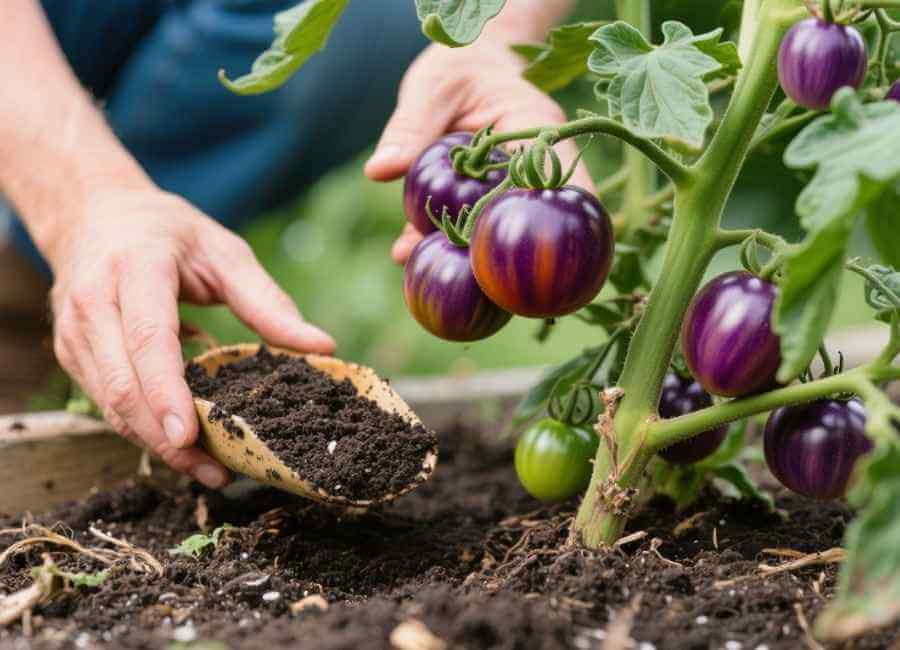
These tomatoes need a lot of nutrients, especially when they start making fruit in June. To get a good harvest, fertilize them regularly. Use a slow-release fertilizer made for tomatoes when you plant them. This gives the plants steady nutrients for months (Cherokee Purple Tomato, n.d.).
After about two months, the first round of fertilizer will run out, so you’ll need to add more to support the plants for the rest of the season (Cherokee Purple tomato: care & cultivation tips, n.d.). Good nutrition helps your Cherokee Purple tomatoes keep producing lots of fruit until the first frost in October.
Harvesting and Using Your Tomatoes
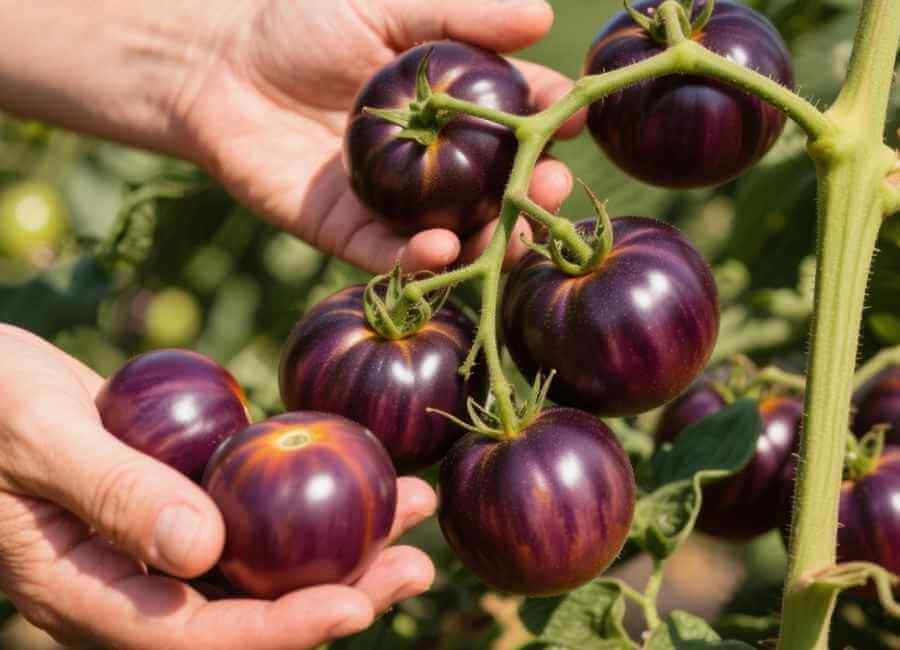
Be patient—Cherokee Purple is a late-season tomato. The fruit usually starts to ripen in mid-August. They are ready to pick when they turn a deep, dusky color and feel a bit soft. The tops near the stem might stay greenish-olive even when the tomato is ripe.
After you pick them, these tomatoes can be used in many ways. Their dense, meaty texture and rich flavor are great for sandwiches and burgers. They also work well in fresh sauces, soups, or even homemade ketchup. Their tangy-sweet taste is best when eaten fresh, so try them in a simple salad with olive oil and salt.
Start Your Heirloom Garden Today
Growing Cherokee Purple tomatoes connects you to history and gives you a flavor you won’t find in stores. They need more care than some types, but the reward of picking these tasty, beautiful tomatoes is worth it. With the right spot, support, and feeding, you can grow this special heirloom at home.
If you want to try growing unique tomatoes, Cherokee Purple is a great place to begin. If you enjoy dark, flavorful tomatoes, you might also like the ‘Black Cherry’ cocktail tomato for another tasty option in your garden.







